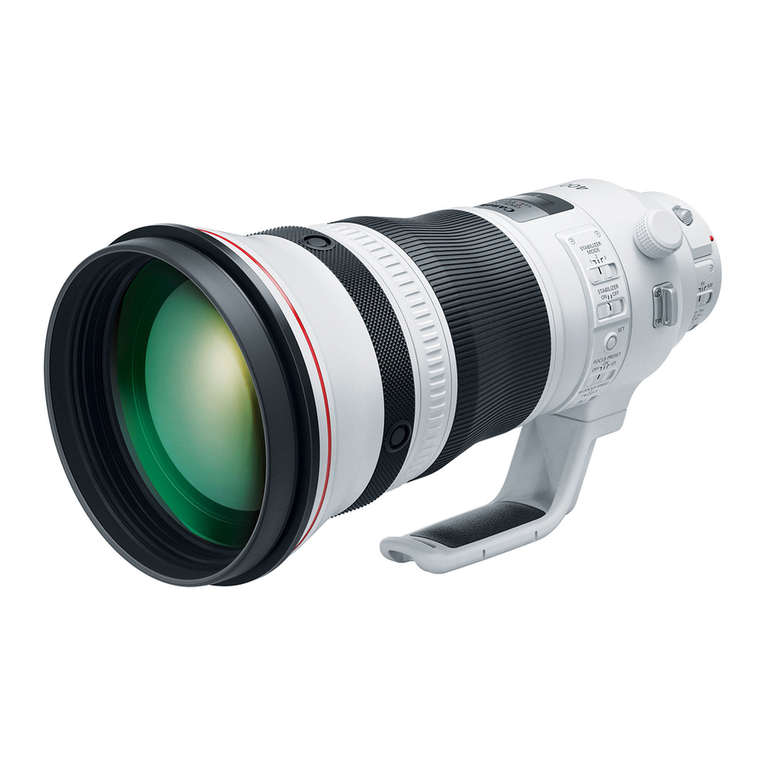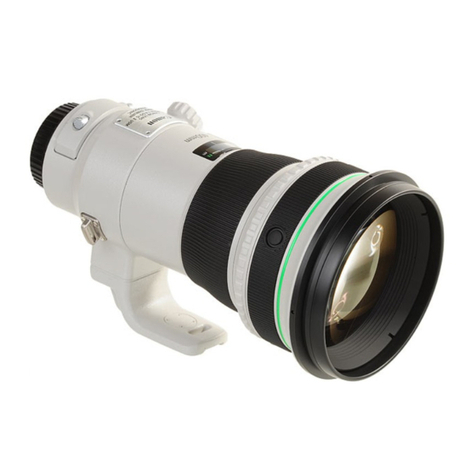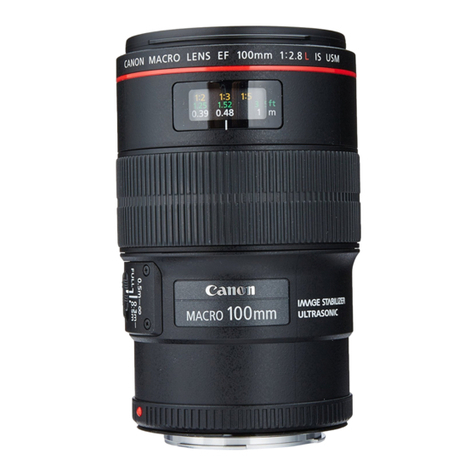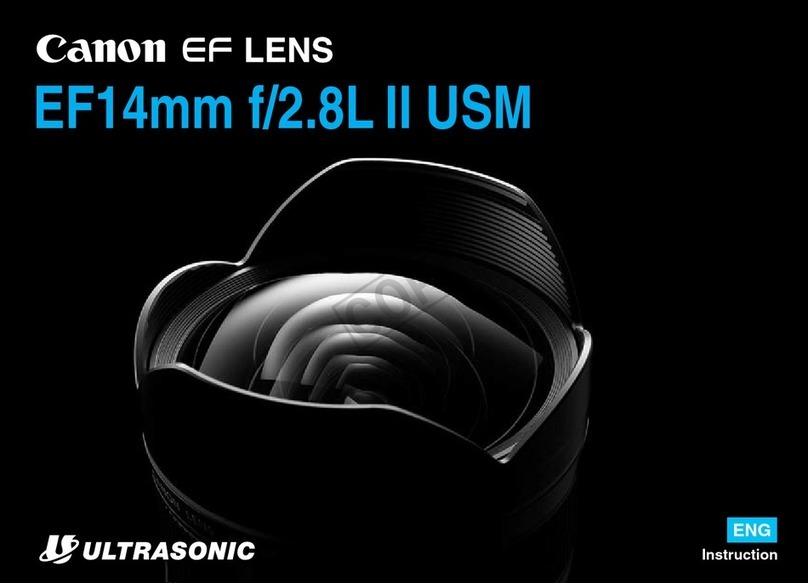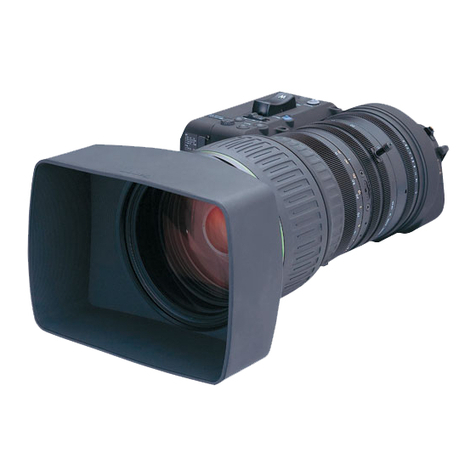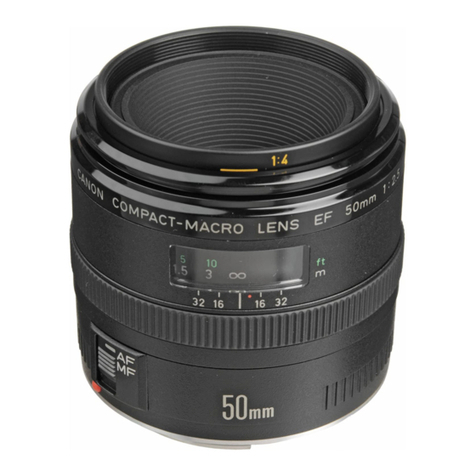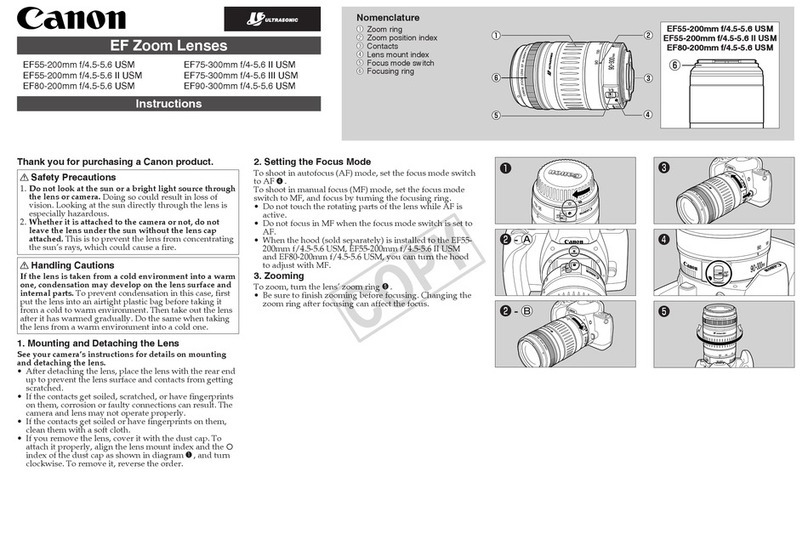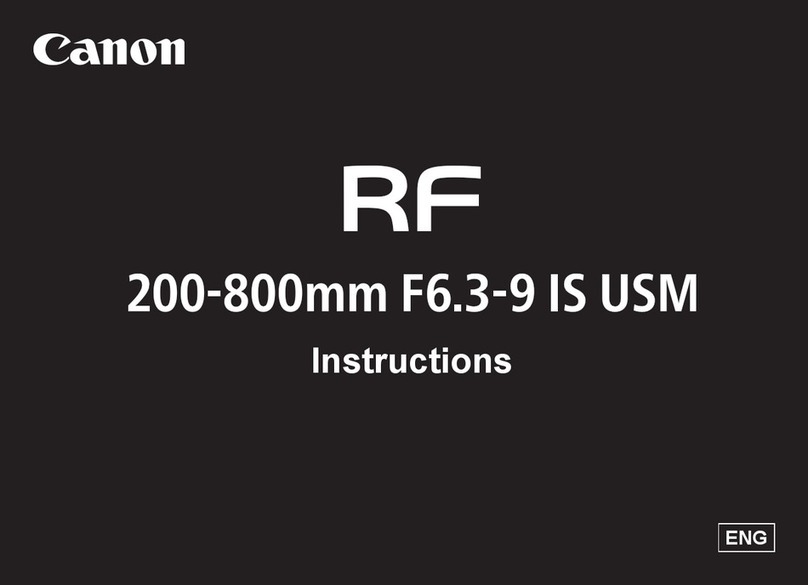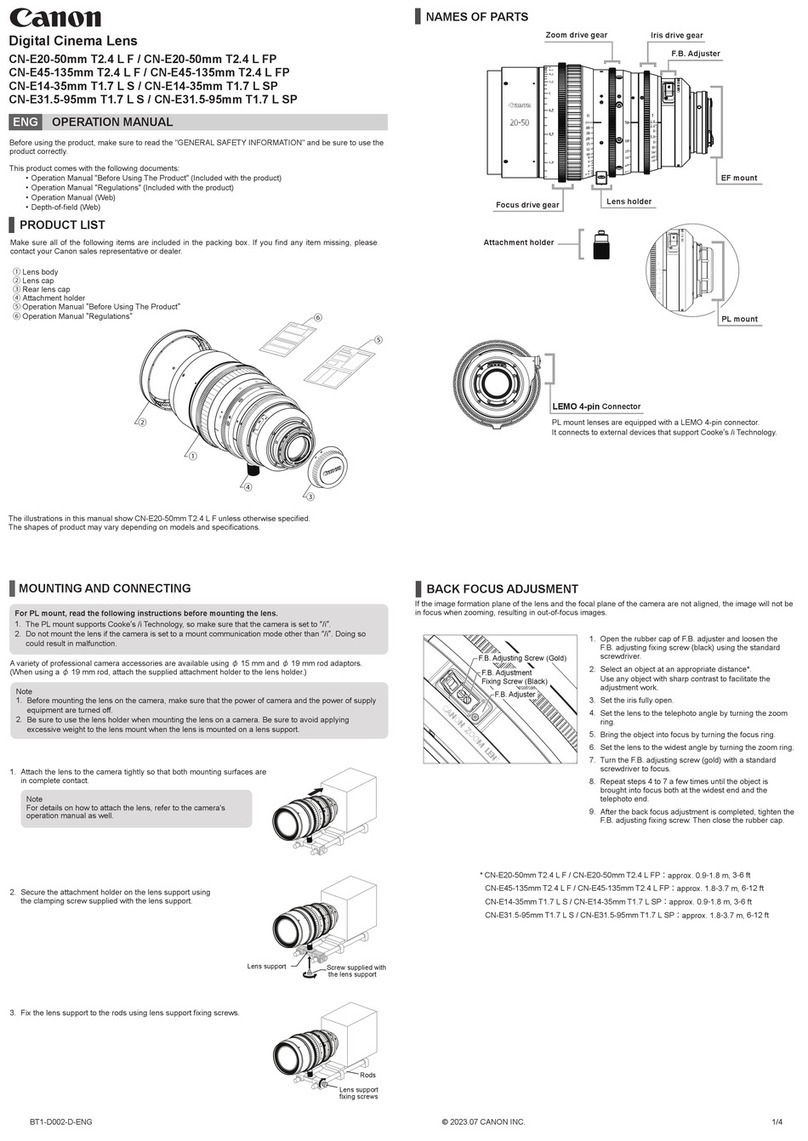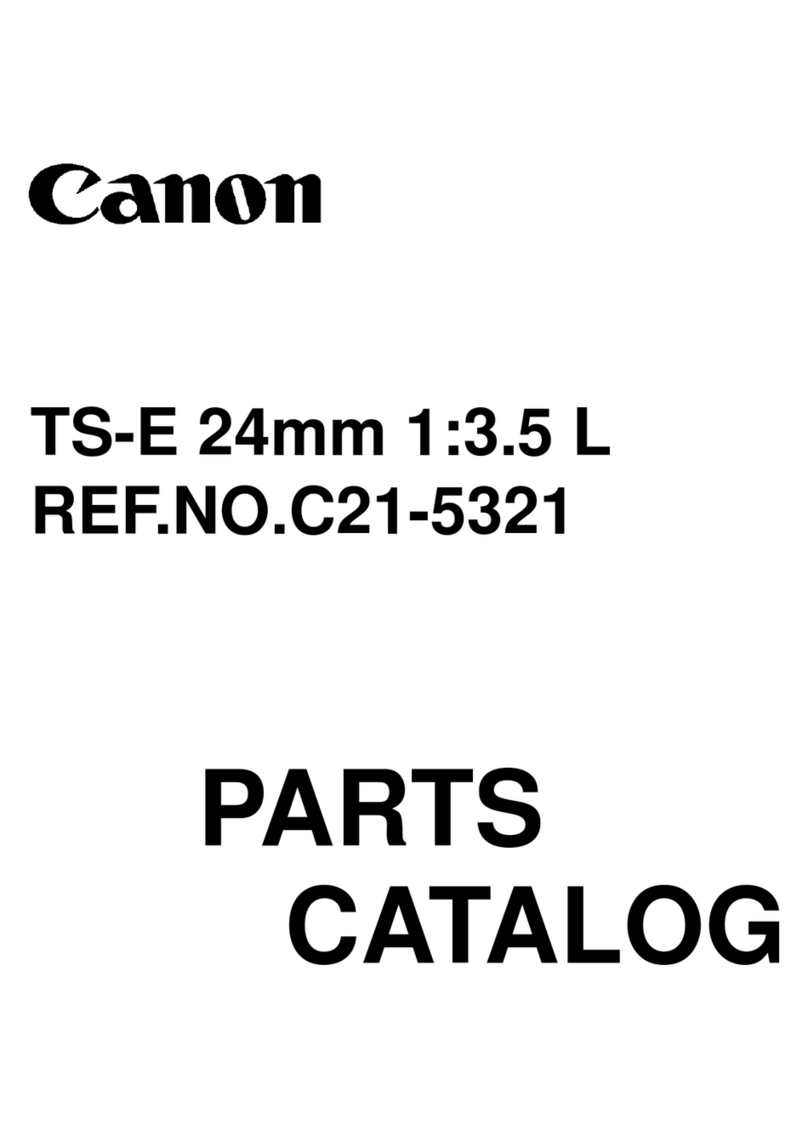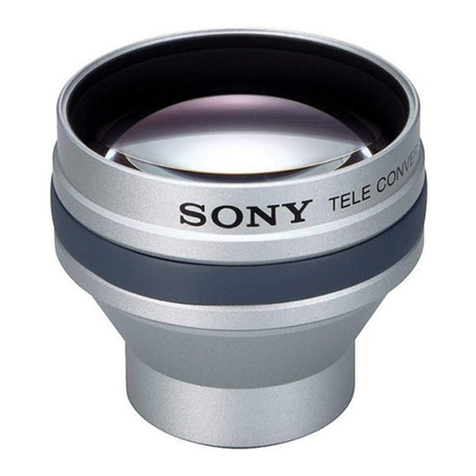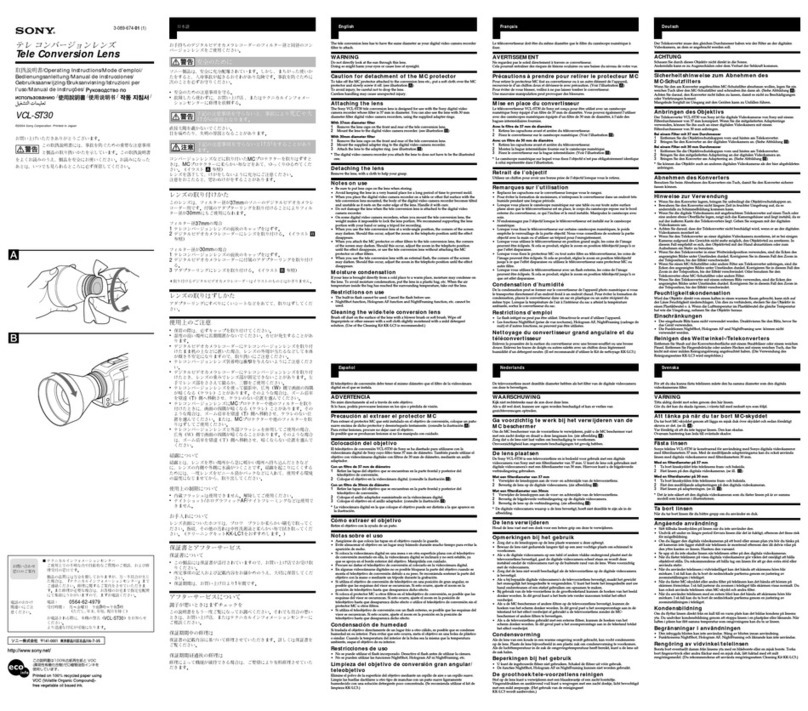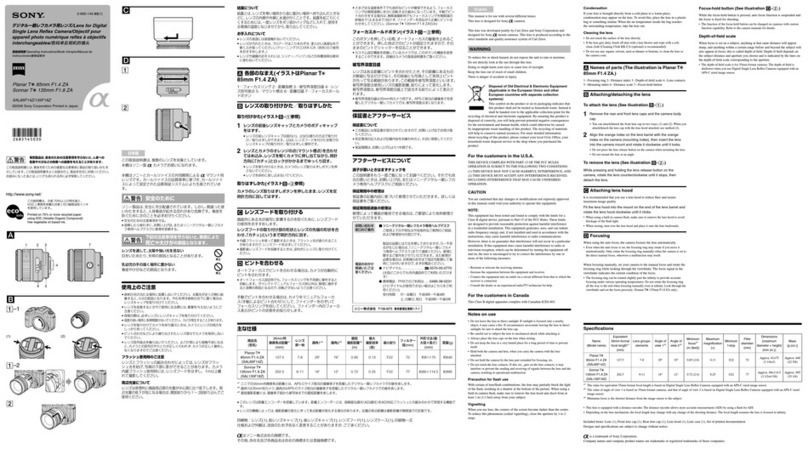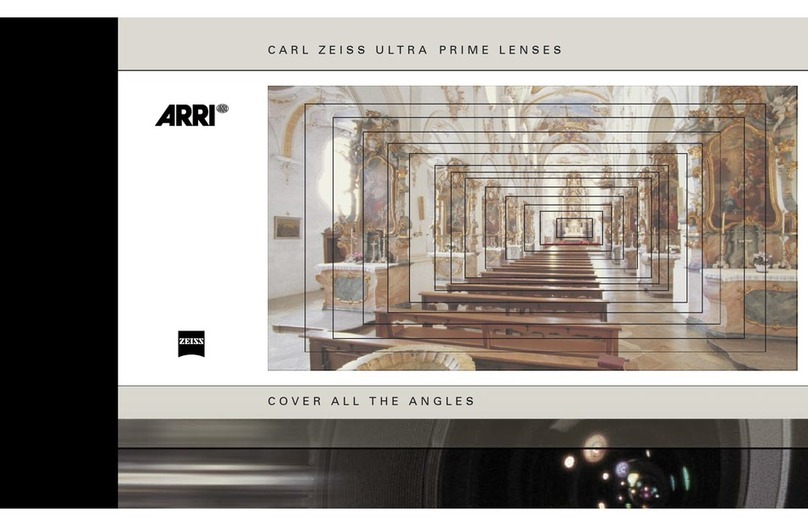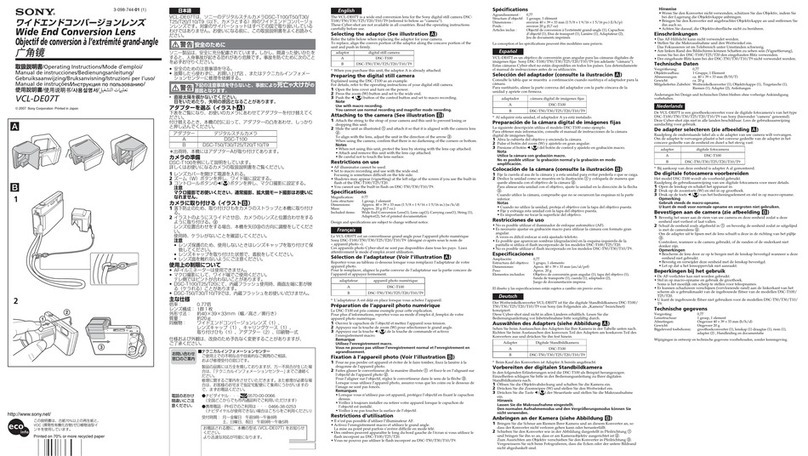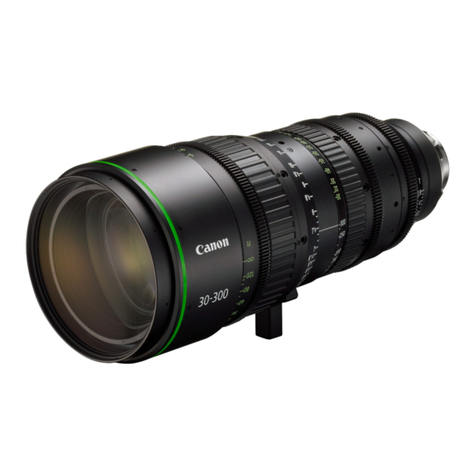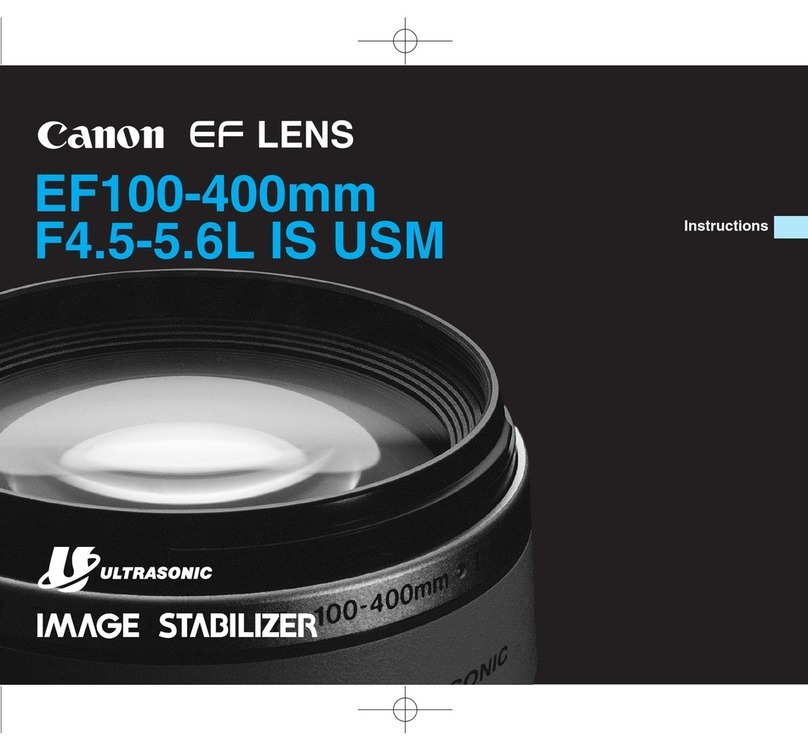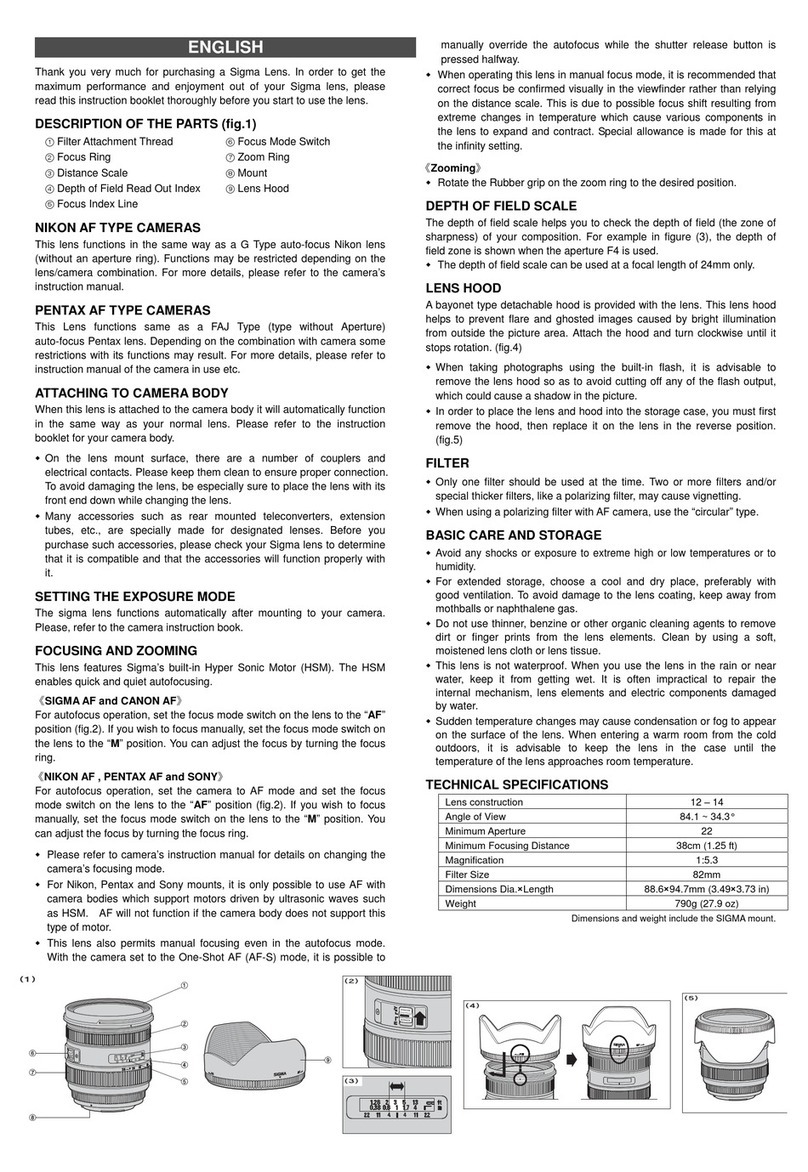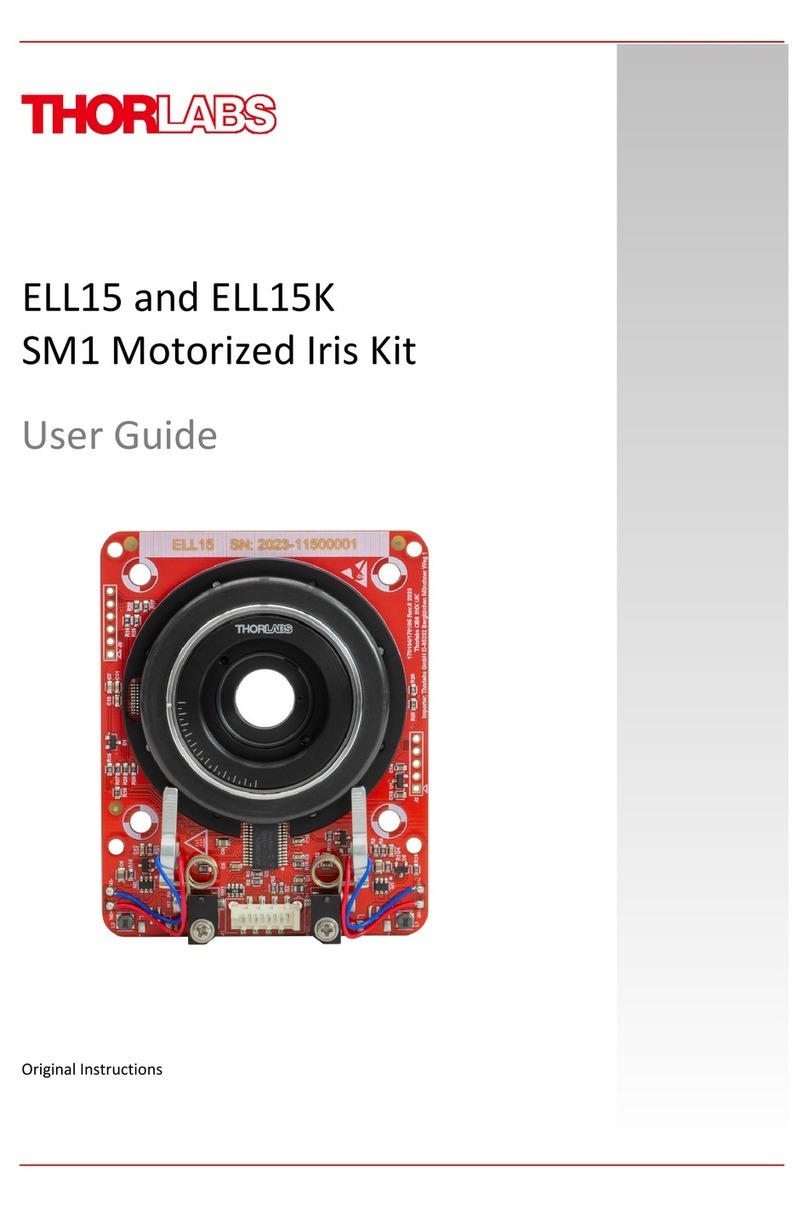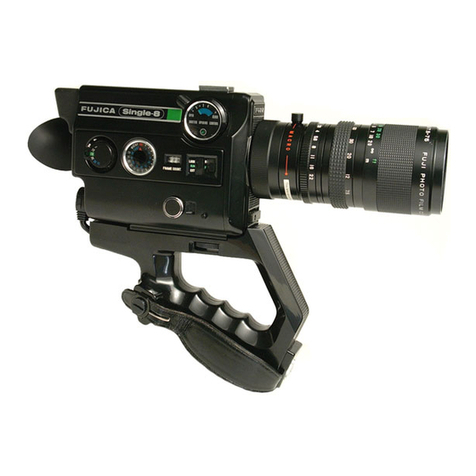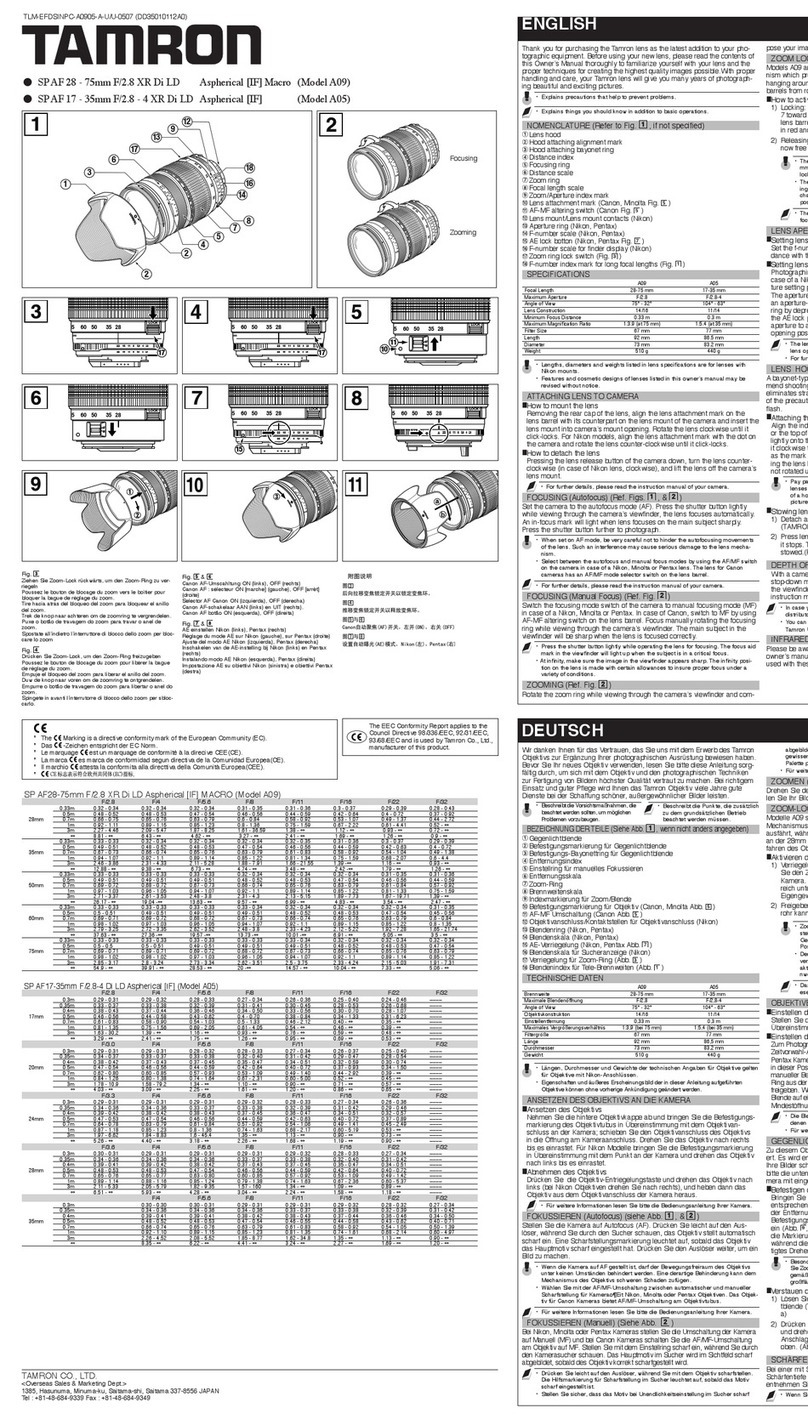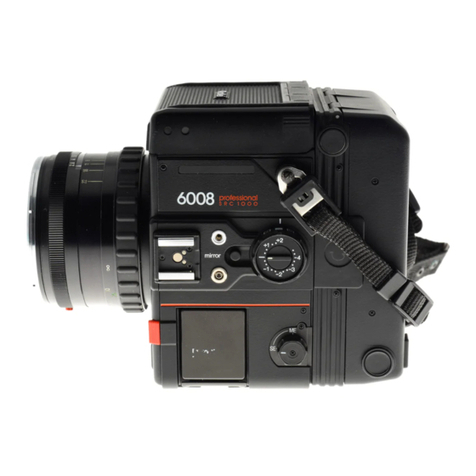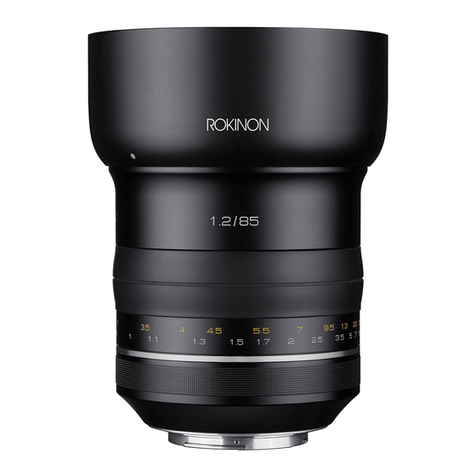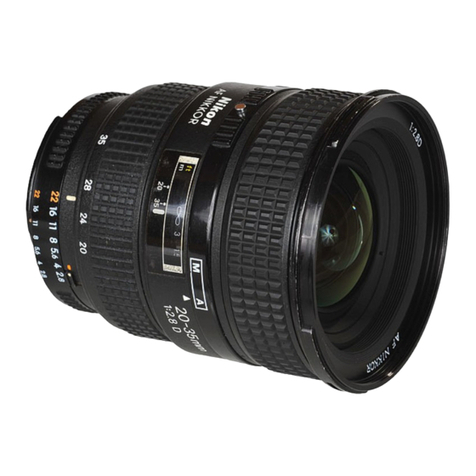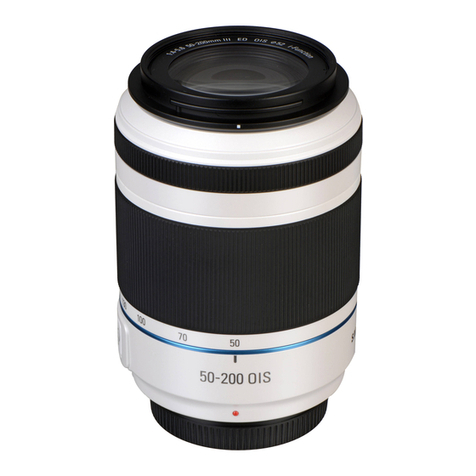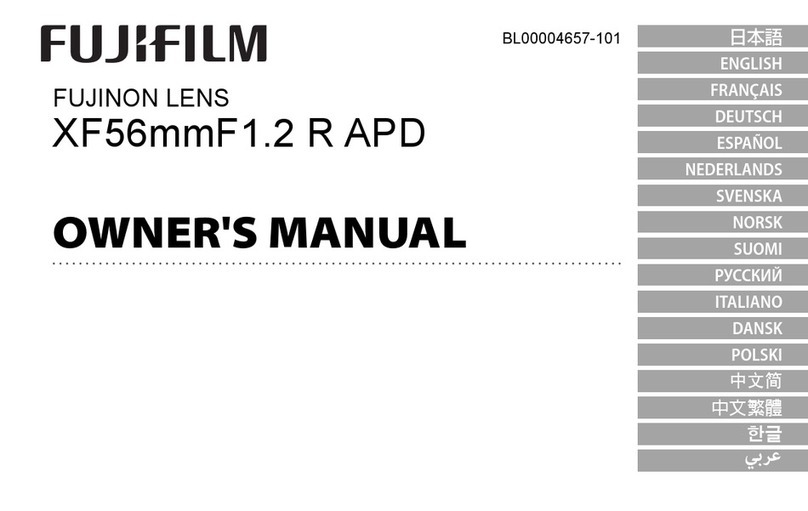
EF
Lenses
EF-S24mm f/2.8 STM
Instructions
Thank you
for
purchasing a Canon product.
EF-S24mm f/2.8 STM is a compact, lightweight, low-profile high quality wide-angle lens.
e
~
sTM"
stands for Stepping Motor
~
Safety
Precautions
e
Do
not
look
at
the sun
or
a
bright
light
source
through
the lens
or
camera. Doing
so
could result
in
loss
of
ViSIOn.
looking
at the sun directly through the tens
is
especially hazardous.
e
Whether
it
is
attached
to
the camera
or
not
,
do
not leave the lens under the sun
without
the lens cap
attached.
This is to prevent the lens from concentrating the sun's rays, which could cause a fire.
Handling Cautions
e If the lens
is
taken from a
cold
environment
into
a warm one, condensation may develop on the lens
surface
and
internal
parts.
To
prevent condensation in this case, first put the lens into an airtight plastic bag
before taking it from a cold to
warm
environment. Then take out the lens after it has
wa
rmed gradually. Do the
same when taking the lens from a warm environment into a cold one.
e
Do not leave the lens
in
excessive heat such as
in
a car
in
direct sunlight. High
tempe
r
atures
can
cause
the
lens
to
malfunction.
Usage Precautions
e
When using this lens, please check the Canon website for the latest camera firmware. If the camera's firmware is
not the latest version, be s
ur
e to update to the latest firmware.
e
For details on updating firmware, please check the Canon website.
Cautions
during
shooting
e
This lens uses a stepping
motor
to drive the focusing lens (the lens that has the job of focusing the shot).
1.
Cautions when the power is off
Since the motor does not operate when the camera
is
off or
has
been turned by the auto power-off function,
take note of the following points.
•
The
focus cannot be adjusted in manual focus
mode
.
2. Cautions when the lens is in sleep mode
This lens has a sleep mode separate from the came
ra
auto power-off function for saving power when the lens
has not been operated
lor
a period of time.
Since the
motor
does not operate when the lens
is
in sleep mode, even if the camera is turned o
n,
take note of
the following points.
•
The
focus cannot be adjusted in manu
al
focus mode.
•
To
recover the lens from sleep mode, press the shutter button halfway.
e
To
retract the lens if extended, keep the lens attached to the camera, and
then
autofocus at infinity
or
turn the
focusing ring.
Conventlona
UMd
10
lhia
lnatructlon
. .
Q
Warning
to
prevent lens
or
camera malfunction
or
damage.
(;§]
"'1
L1J
Supplementary notes on using the lens and taking pictures.
1. Mounting and Detaching
the
Lens
See
your
camera
's
instructions
for
details
on
mounting
and
detach
!
~
g
the
lens.
O
e
After detaching the lens, place the lens
with
the rear end up
to
prevent the lens suriace
and
contacts from
getting scratched. v
!I!"
*
e
~~:ec::~::':r!e~:~~~y~:~::~~t~r
p~~:~;rpr
ints
on
thp
~
corrosion
or
faulty connections can
result
~
e
If the contacts get soiled or have fingerprints on them, clean
the
n\
with a soft cloth. r
.:::
e
If
you
remove the lens, Cover it with the dust cap.
To
attach it-p
roPe
rty,
align the lenl) mount index and the
0
index of the dust
cap,
and turn clockwise
e.
To
re
~
it,
r~~
th
e order.
2.
Setting the Focus Mode
To
shoot
in
autofocus (AF) mode, set the focus
mode
switch to AF
8 .
To
shoot
in
manual focus (MF) mode. set the focus mode switch to MF, and turn the focusing ring to set the focus
8 .
~
When the camera AF mode is ONE SHOT
AF,
focus manuallyby pressing the shutter button halfway and
L..jJ
turning the focusing ring. (Full-time manual,tocusJ
if-
w ""'::_,
.......
~,--.._
0
..
e
When turning the focusing
n~Q
~
~d'd
e
;,iY.
t
he
fOcUs
8dju;tmfnt
may
"'
~~
d
~
-
e
The focus cannot be adjusted
in
MF mode while the
camer(,.i~off.
e
Do not touch the front rotating parts of the lens while
autof~us
is active.
3.
Hood (Sold Separately)
The ES-52 hood can keep unwanted light out of the lens, and also protects the lens from rain, snow, and dust.
When attaching the hood, securely attach it to the filter mounting thread (o52mm) on the front of the lens, or to the
thread (052mm) on the front of the filter that is already fitted to
tt-e
lens (excluding older Canon circular polarizing
filters that do not have a filter mounting thread on the front)
e.
U
Part
of the picture may
be
blocked if the hood
is
not ait.1ctJro prOperly.
4. Filters (Sold Separately)
Yo
u can attach filters to the front of the len
s,
or to the filter mounting thread (e52mm) on the front of the hood.
Q
e
Only
one
filter may
be
attached.
~'>&
\ .,..
e
Use
the Canon Circular Polarizing Filter PL-C B
(o52mm
)as the polarizing filter.
e
You
can use hoods
and
filter attached in any order.
A,
"'
5.
ExtensionTubes (Sold Separately)
You
can attach extension tube EF12 II or EF25
II
for magnified shots. For shooting distance and magnification, see
the extension tube specifications.
[i}
MF mode is recommended for accurate focusing.
e
The lens length
is
measured from the mount surface to the front erd of the lens. Add 23.9 mm when including the
lens cap and dust cap.
e
The extenders cannot be used with this lens.
e
The close-up lenses cannot be used with this lens. (The end of the lens will become heavy, causing the focus to
become unstable.)
e
CASE (Sold Separately) LP
811
This device complies with Part 15 of the FCC Rules. Opera
ti
on is subject
to
the following t
wo
conditions: (1) This
device may not cause harmful
in
terference, and (2) this device must accept any interference received, including
interterence that may cause undesired opera
ti
on.
Do not make any changes or modifications to the equipment unless otherwise specified
in
the instructions.
If
such
changes or modifications should
be
made, you could
be
required to stop operation of the equipment.
This equipment has been tested and found to comply with the limits for a class 8 digital device, pursuant to part
15
of the FCC
Ru
les.
These limits are designed to provide reasonable protection against harmful interference in a residential installation.
This equipment generates, uses and can radiate radio frequency energy
and
, if not installed and used
in
accordance with the instructions, may cause harmful interterence to radio communications.
However. there is no guarantee that interference will not occur in a particular installation.If this equipment does
cause harmful interterence to radio
or
television reception, which can be determined by turning the equipme
nt
off
and on, the user is encouraged to
try
to correct the interlerence by one or more of the following measures:
Reorient or relocate the receiving antenna.
Increase the separation between the equipment and
re<:eiver.
Connect the equipment into an outlet on a circuit different from that to which the receiver is connected.
Consult the dealer
or
an experienced radio!TV technician for help.



